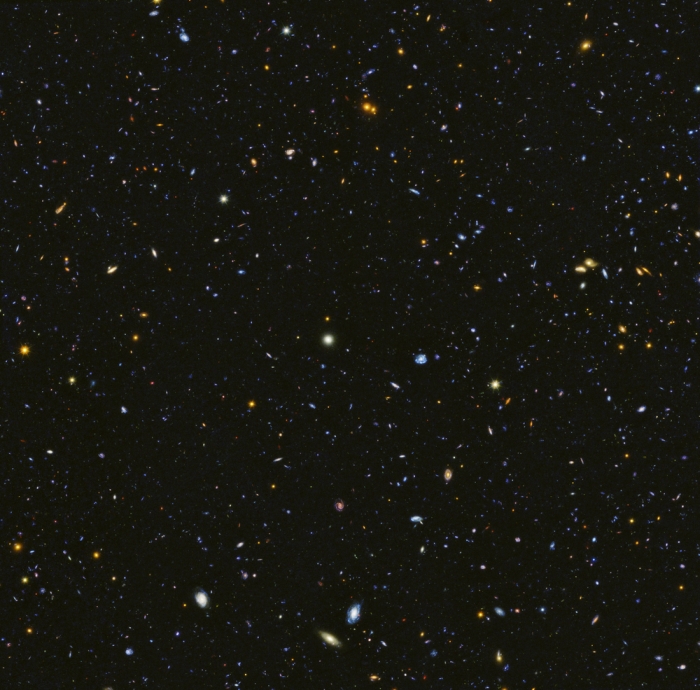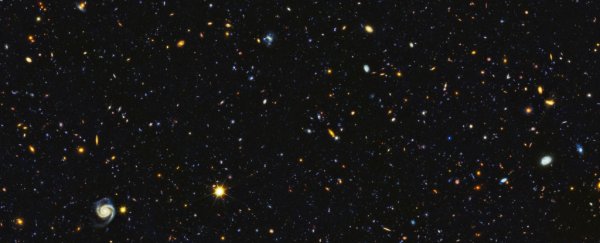This new Hubble image is an excellent way to remind yourself of the sheer enormity of the Universe.
The space-based telescope pointed its delicate instrumentation at a particular region of the sky for hours, peering deep into space to a distance of 11 billion light-years - just 3 billion years after the Big Bang.
It looks like a field of stars - but what you're feasting your eyes on in the full image (what you saw above is just a small section) is a panorama containing over 15,000 galaxies.
Of those galaxies, 12,000 are alive with the incredibly dynamic process of making new stars.
Astronomers looking at this image can trace the Universe's star-forming history, right back to when it was at its most active, 11 billion years ago.
It's an incredible achievement, and builds upon years of work conducted by the Hubble Space Telescope and other observatories.
The data adds to the Cosmic Assembly Near-infrared Deep Extragalactic Legacy Survey (CANDELS), which obtained just under two months' worth of near-infrared observation data to develop a survey of over 250,000 early Universe galaxies.
"Ultraviolet light has been the missing piece to the cosmic puzzle," a Hubble spokesperson wrote.
"Now, combined with infrared and visible-light data from Hubble and other space and ground-based telescopes, astronomers have assembled one of the most comprehensive portraits yet of the universe's evolutionary history."
 (NASA, ESA, P. Oesch, and M. Montes)
(NASA, ESA, P. Oesch, and M. Montes)
The observations were made with the ultraviolet imaging spectrograph on Hubble's Wide Field Camera 3. For hours, this instrument was trained on specific regions of space to obtain ultraviolet data.
By using instruments that cover multiple wavelengths, this allows astronomers to put together a more complete picture.
This is because the light that left early Universe objects may have started out in the ultraviolet range, but the expansion of the Universe has stretched those wavelengths so that they're only detectable in infrared by the time they reach us.
However, later objects can be viewed in a variety of wavelengths. So Hubble's early Deep Field surveys were missing key data from between 5 and 10 billion light-years ago - ultraviolet observations filled in those blanks.
The first of the Deep Field surveys to include ultraviolet data was released in 2014. The Ultraviolet Coverage of the Hubble Ultra Deep Field contained 10,000 galaxies, in a small section of space in the southern constellation of Fornax.
The new mosaic, called the Hubble Deep UV (HDUV) Legacy Survey, covers an area 14 times the size of that 2014 release, offering new insights into how the Universe evolved.
"By comparing images of star formation in the distant and nearby universe," the Hubble spokesperson wrote, "astronomers glean a better understanding of how nearby galaxies grew from small clumps of hot, young stars long ago."
And it'll make you feel really teeny tiny. There's gotta be other life out there somewhere… right?
A paper describing the survey has been published in The Astrophysical Journal, and you can download the images full-size on the Hubble website.
